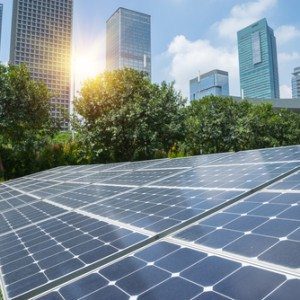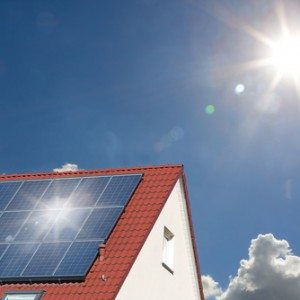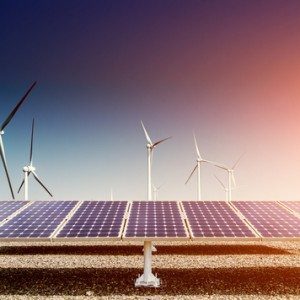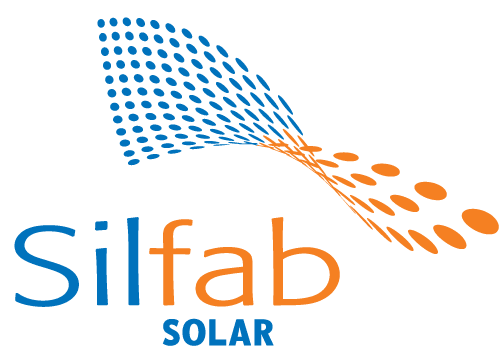 The number of solar panel installations has increased over the past couple of years, owing to various improvements in solar technology and increased sensitization on the benefits of solar energy. Below is a brief look at the top benefits of switching to solar.
The number of solar panel installations has increased over the past couple of years, owing to various improvements in solar technology and increased sensitization on the benefits of solar energy. Below is a brief look at the top benefits of switching to solar.
- Home
- Residential
- Commercial
- Tesla
- Testimonials
- About Us
- Contact Us
Category: Solar Power
 The number of solar panel installations has increased over the past couple of years, owing to various improvements in solar technology and increased sensitization on the benefits of solar energy. Below is a brief look at the top benefits of switching to solar.
The number of solar panel installations has increased over the past couple of years, owing to various improvements in solar technology and increased sensitization on the benefits of solar energy. Below is a brief look at the top benefits of switching to solar.
Use Solar Energy to Earn a LEED Certification
Written by goldensolar on . Posted in Solar Panels, Solar Power. Leave a Comment
 Solar is one of the renewable energy strategies that can earn you LEED certification. Among the various LEED system rating categories, solar falls under the “Energy & Atmosphere” category. By implementing solar power system strategies in your home or business, you stand to gain up to 8 LEED points under the “On-Site Renewable Energy” (EA Credit 5) credit. The number of LEED points earned is dependent on the percentage of energy costs that you have managed to offset through your on-site renewable energy initiatives. The calculation is basically the percentage of energy produced by renewable energy systems compared to the total annual energy cost in your building.
Solar is one of the renewable energy strategies that can earn you LEED certification. Among the various LEED system rating categories, solar falls under the “Energy & Atmosphere” category. By implementing solar power system strategies in your home or business, you stand to gain up to 8 LEED points under the “On-Site Renewable Energy” (EA Credit 5) credit. The number of LEED points earned is dependent on the percentage of energy costs that you have managed to offset through your on-site renewable energy initiatives. The calculation is basically the percentage of energy produced by renewable energy systems compared to the total annual energy cost in your building.
Why Should Your Building Be LEED Certified?
The realization that buildings cause significant environmental degradation has driven construction and other real estate professionals to shoulder the responsibility of mitigating some of the risks. The Leadership in Energy and Environmental Design (LEED) rating system was developed by the United States Green Building Council (USGBC) to provide guidelines that promote the use of renewable resources such as solar panel systems in order to reduce the damage caused to the environment by buildings. LEED certification encourages the use of energy-efficient lighting and HVAC systems, as well as other energy conservation and management efforts that lower the amount of electricity utilized in buildings. Some of the on-site renewable energy technologies that can earn you valuable LEED points include: Solar thermal power systems, solar photovoltaic panels, tidal/wave systems, biogas/biomass systems, geothermal systems, and wind turbines.The Growth of Solar Energy Systems
The use of solar PV arrays has over the years grown from the basic residential applications to more complex commercial applications. As such, it is commonplace to find solar panel installations in many different types of building structures including office buildings, industrial complexes, government agencies, institutions of learning etc. Implementing solar energy systems goes a long way to achieve some of the goals of LEED such as:- Helping to effectively reduce the level of carbon emissions
- Enhancing the quality of air
- Eliminating the dependence on non-renewable energy sources
- Helping real estate developers to make better building decisions
Benefits of Implementing Solar Power Systems
The benefits of installing solar panels or any other form of on-site renewable energy in your building do not end with achieving LEED certification only. There are additional benefits of installing solar systems such as:- Reduction of the environmental impact caused by reliance on non-renewable energy sources
- You get to enjoy a wide range of incentives from government for implementing renewable energy
- A significant drop in power bills since you don’t have to rely on electricity from the grid only
- You can attract visitors and/or tenants who are environmentally conscious to your building
- You can cushion yourself from the ever rising energy bills since the cost of solar energy does not fluctuate
Fact or Fiction? Setting the solar energy record straight
Written by goldensolar on . Posted in Solar Power. Leave a Comment
 The number of solar panel installations has, in recent years, surged significantly – with the estimated number of solar power system installations in both homes and commercial premises rapidly approaching the million mark. However, this is surprising since the total national solar electric capacity, which currently stands at 22,700 megawatts, is sufficient to power about five times more homes. The big question then, why aren’t more homes and businesses switching to the solar panel system to cater for their everyday power needs? Well, the indifference can partly be attributed to some misconceptions surrounding solar power. Below are some of the commonly misunderstood issues.
The number of solar panel installations has, in recent years, surged significantly – with the estimated number of solar power system installations in both homes and commercial premises rapidly approaching the million mark. However, this is surprising since the total national solar electric capacity, which currently stands at 22,700 megawatts, is sufficient to power about five times more homes. The big question then, why aren’t more homes and businesses switching to the solar panel system to cater for their everyday power needs? Well, the indifference can partly be attributed to some misconceptions surrounding solar power. Below are some of the commonly misunderstood issues.
FACT OR FICTION: The Common Misconceptions About Solar Power Systems
1. FICTION: Solar power installations are too costly
One major factor that keeps many home and business owners from switching to solar panel systems is the notion that it is expensive to make the switch. Sure, the capital cost of acquiring solar panels is significant. However, it is important to note that this cost has significantly dropped, compared to earlier years, owing to improvement in technology, and the growing demand for solar which has allowed for mass production. Competition between the various solar companies has also enabled consumers to enjoy better products at lower costs.2. FACT: You enjoy long-term savings by switching to solar
Granted, solar power panels don’t come cheap. In addition, the capital cost required to install the solar panels in your home or business is also high. So, is it alright to assume that solar power is an expensive venture? Not at all! First, the cost of installing solar is a one-off financial investment. After the installation is complete, you don’t need to ever worry about recurring power bills. Compare this to having to pay monthly power bills every year? You get to save lots of dollars. Besides, solar installations increase the value of your home.3. FICTION: South is the only direction to install your solar panels
Installing your solar panels facing southward has a major advantage in that you benefit from having direct sunlight to your panels for the most part of the day. As such, the solar panels are likely to generate more electricity as compared to panels installed facing other directions. However, it is wrong to assume that only southward-facing homes should be fitted with solar systems. You can benefit from solar energy regardless of the direction that your roof faces. An exception is for roofs that are oriented northward, which in some cases may be unable to produce sufficient solar power to make an investment in solar panels financially viable.4. FACT: You can benefit from tax incentives by switching to solar
The federal government offers generous tax incentives referred to as the Solar Investment Tax Credit to encourage home and business owners to make the switch to solar. This incentive allows for up to 30 percent relief on the cost of solar panel installation. In some States such as Utah, the tax incentive is capped at $2,000.3 Big Records In Solar Energy
Written by goldensolar on . Posted in Solar Power. Leave a Comment
 The adoption of solar energy as a renewable source is rapidly gaining traction in both residential and commercial applications. Observations over the past few years show a steady increase in solar panel installations, surpassing some of the promising alternate energy sources. There are clear indications that solar is likely to be the leading energy source in the coming years.
The adoption of solar energy as a renewable source is rapidly gaining traction in both residential and commercial applications. Observations over the past few years show a steady increase in solar panel installations, surpassing some of the promising alternate energy sources. There are clear indications that solar is likely to be the leading energy source in the coming years.
What is driving the growth in solar adoption?
Affordability: In the early years of solar power innovation, the cost of installing solar panels was exorbitant. What’s more, compared to the relatively limited amount of energy the panels could produce at the time, the cost to benefit ratio was minimal. In recent years, however, the cost of solar power panels has come down significantly. At the same time, the amount of electricity generated per solar power panel has increased to make it a cost-effective source of energy. Green Energy: The need to protect the environment has gained momentum in the past few decades. In this regard, environmentalists have promoted the adoption of solar power as an alternate energy source; encouraging many home and business owners to make the shift to solar energy.The Latest Milestones in Solar Industry
The U.S. has, without a doubt, been a leader in the solar industry for sometime now. The various solar companies in the country have spearheaded innovations that have made solar power more attractive and acceptable for both home and commercial applications. Unlike the second-most influential solar panel producer, China, U.S. companies have posted excellent results especially with regard to solar efficiency. Below is a look at some of the recent record-breaking events in the solar industry. 1. Number of solar installations – 7.3 GW and counting… The announcement by GTM Research and the Solar Energy Industries Association, citing the number of solar installations in the United States in 2015 at a historic 7,286 megawatts of solar PV sets a new record in the quest for renewable energy. This represents a 14% increment from the installations in 2014, and certainly a great improvement in solar uptake compared to the measly 385 megawatts recorded in 2009. Needless to say, California was the leading State in the number of solar installations, followed by North Carolina, Nevada, Massachusetts, and New York in the top five, respectively. 2. SunPower efficiency Solar efficiency has been a major target for solar panel manufacturers, with the aim being to produce maximum electricity from each solar panel. One of the leading solar panel manufacturers in the US, SunPower, reported an impressive 22.8% solar efficiency in its X22 panels. Following confirmation by the National Renewable Energy Laboratory, SunPower solar panels hold the record in achieving efficiency in recent years, having reported a similarly impressive 19.5% efficiency in 2010. 3. First Solar Efficiency First Solar, also a U.S. solar panel manufacturer, announced their own solar efficiency record for their CdTe solar cell – 22.1%.What does diminished sunlight mean for solar panels
Written by goldensolar on . Posted in Solar Maintenance, Solar Panels, Solar Power. Leave a Comment
 Whether you’re considering a solar panel system for your home or you already have one installed, you may have wondered how well it will work on days when there isn’t bright sun or there’s particularly inclement weather. It’s actually a very reasonable inquiry, as most people think of solar panels as functioning ideally in bright sunlight, which is not necessarily available continuously or even for a majority of the day in all geographic areas. In certain regions, at certain times of the year, such as the far north in winter, the sun may set in the late afternoon and not rise again until well into the next morning.
Whether you’re considering a solar panel system for your home or you already have one installed, you may have wondered how well it will work on days when there isn’t bright sun or there’s particularly inclement weather. It’s actually a very reasonable inquiry, as most people think of solar panels as functioning ideally in bright sunlight, which is not necessarily available continuously or even for a majority of the day in all geographic areas. In certain regions, at certain times of the year, such as the far north in winter, the sun may set in the late afternoon and not rise again until well into the next morning.
Efficiency vs. Sunlight Availability
However, according to researchers at Northern Illinois University, a solar power system can function at 70 percent of its capacity even when direct sunlight isn’t at hand, ie, when skies are overcast or there’s shade. Ambient light from the day is still enough to provide power. Precipitation can provide challenges for solar panels, but when it comes to hail, for instance, as long as the speed of the hailstones is less than 50 miles per hour and their diameter doesn’t exceed one inch, normal solar panels can withstand the stones’ impact and are tested for such conditions when they’re manufactured, as reported in Mother Earth News. A typical solar panel installation is made to withstand high winds at the extremes of those of the local areas in which it’s installed. For instance, on the East Coast of the U.S., solar panels are designed to hold up under intense hurricane and tropical storm conditions that are sometimes seen in those states. Especially in the North, homeowners want to know what impact snow will have. The answer is that snow typically melts off the surface of the panels because they’re designed to face the direction the sun will most often be in. The sun’s rays will thus shine directly onto the snow, causing it to melt. In fact, in an article on accuweather.com, Associate Professor Joshua Pearce of Michigan Tech University writes that surrounding snow can actually boost the output of the panels because the white surface of the snow reflects the light. Large accumulations of snow can be removed with a roof rake without fear of damaging most panels. Rain also can be a benefit for solar panels because it can wash away dirt and dust that can lower energy output due to clouding or spotting. Even on a cloudy day with significant rain, the amount of light visible in the sky will still produce power from the panels. And despite the decreased output in energy due to these conditions, expected advances in solar panel technology will increase efficiency and compensate for the diminished extent of direct sun in certain regions or on particular days. Indeed, for homeowners, the future is bright for solar power.









